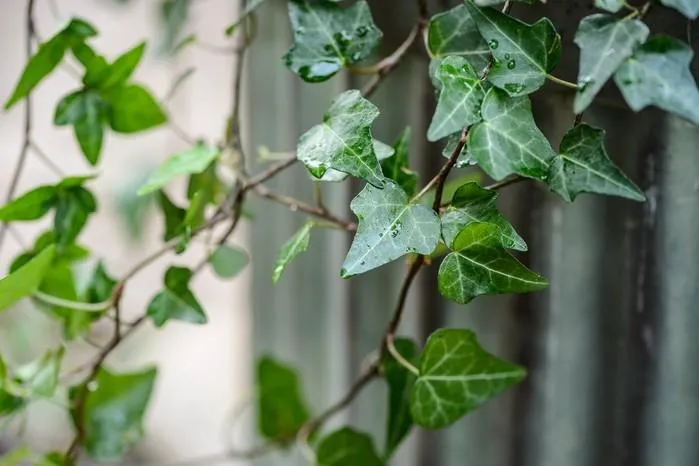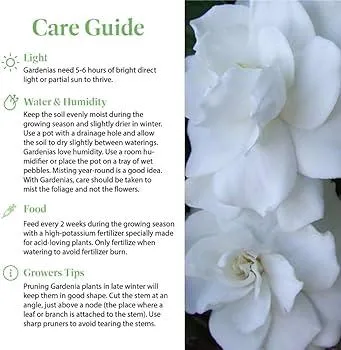A Complete Guide to English Ivy Care
Taking care of english ivy is easier than you think! As someone who has struggled with plant care in the past, I know firsthand the frustration of not knowing how to keep things alive. But ivy is super low maintenance once you get the basics down. Let me walk you through everything you need to know to have a healthy, happy ivy plant.
Light Requirements
Ivy likes bright, indirect light. Direct sun can burn the leaves, so it’s best to put it in a spot that gets sunlight for part of the day but is shaded for the rest. An east or west facing window is ideal. If your space only gets northern light, no worries – ivy can still thrive with less sun. It’ll just grow more slowly.
Watering Tips
When it comes to water, you want to keep the soil consistently moist but not soaked. The drainage holes at the bottom of the pot are key – you don’t want the plant sitting in water. I water mine about once a week, but check the soil before watering. If the top inch is dry, it’s thirsty. Kind of like how my friend Brian gets after one too many beers, amirite?! In the winter when growth slows, cut back to every other week. Too much water is worse than too little.
Fertilizing Schedule
During the growing season from spring through fall, fertilize your ivy every 4-6 weeks with a water soluble houseplant fertilizer. Dilute it to half the strength recommended on the label. Ivy is pretty low maintenance, but a little plant food goes a long way in keeping it looking full and lush. You can skip fertilizing in the winter when growth slows down. Just remember – lesser of two weevils, as they say!

Potting and Repotting
Ivy can stay potted for years if you use the right size container. As a rule of thumb, repot when the roots start to grow out the drainage holes. Use a pot just 1-2 inches wider than the current one. Potting mix specifically for houseplants works well. When repotting, gently tease apart the matted roots if needed before placing in fresh soil. Pat it down firmly around the stem. With new soil and a bit more space to grow, your ivy will take off like nobody’s business! Unless that business happens to be slowing down traffic…then maybe take it a bit easier, plant buddy.
Pruning and Training
- Ivy grows long, vining stems called tendrils that will climb or trail. You can shape it however you like by pruning or training the growth. Here are some ideas:
- Let it cascade down the sides of a hanging basket or tall pot.
- Train tendrils up a moss pole or trellis for an upright bushy form.
- Trim stems back by 1/3 after flowering to encourage dense new growth.
Snipping off leggy stems keeps things looking neat and promotes bushier foliage. Just cut above a set of leaves using sharp scissors or pruners. Ivy can take regular pruning well and bounces back fast. Bet you didn’t know old ivy hands like me have green thumbs, huh?!
Dealing with Pests
Like any houseplant, ivy is susceptible to the occasional bug but they’re easy to manage. Check leaves regularly for signs of spider mites, aphids or scale insects – they’ll appear as tiny dots on foliage. Rinse leaves with water to dislodge pests before treating with Neem oil or insecticidal soap. These natural remedies are usually enough to get rid of small infestations. For anything harder to beat back, it wouldn’t kill you to try a systemic pesticide. But play nice with the other plants!
Propagation
English ivy is a prolific grower that’s simple to propagate from stem or leaf cuttings. Take 4-6 inch lengths in spring or summer, remove lower leaves, and place the stems directly into potting mix. Keep soil moist and indirect light. Roots should form within a few weeks. Once established, your cuttings can be potted up as new plants! It’s like making copies of your favorite houseplant – who wouldn’t want a whole bunch hanging around, right?! Try not to go overboard or you’ll have ivy growing out your ears. Unless that’s your thing, of course.

Problems to Watch For
Beyond normal pests, there aren’t too many issues with ivy as long as care conditions are suitable. It can drop leaves if under- or overwatered but bounces back quickly. Brown tips on older leaves are often caused by hard water. You may see powdery mildew in low-light areas, but it rarely causes permanent damage. I once had a run in with spider mites that took some elbow grease to contain. But all in all, english ivy is pretty resilient – it’ll forgive most sins of an amateur plant parent like myself! Unless you totally slay it with neglect, then all bets are off.
Where to Use English Ivy
Besides pots and hanging baskets, ivy makes a wonderful groundcover for shady areas in the garden. It climbs well on trees, trellises, arbors or other structures. For indoor use, train vines up picture frames or allow stems to cascade gracefully over shelves and mantels. The dark green leaves add lovely visual interest wherever you put it. Just be careful not to let it take over like kudzu! Before you know it, ivy could be climbing the walls and you’d have jungle vibes indoors. Unless that’s the vibe you’re going for, in which case more power to ya!
Final Tips
Hope this guide gave you everything you need to know to grow a lush, healthy english ivy. Keep soil evenly moist, provide partial shade, fertilize regularly during active growth, and prune to shape. Beyond that, just enjoy your low-fuss vine! Feel free to experiment with different locations too. You never know, a spot you thought was too shady may turn out to be Ivy heaven. And who am I to judge how or where someone arranges their plants? I hope these tips help your ivy thrive for years to come. Let me know if any other questions come up – I’ll do my best to help out. Until next time, happy planting!
English Ivy Care Tips
| Water | Soil | Light | Pruning | Temperature |
|---|---|---|---|---|
| Water thoroughly when top inch of soil is dry. Avoid getting leaves wet. | Well-draining potting soil. Do not let soil stay soggy. | Bright, indirect light. Ivy can take some shade. | Prune to control size and shape or remove dead or diseased growth. | Prefers temperatures between 60-75°F. Can tolerate brief periods down to 50°F. |
| Water less in winter when growth slows. | Add peat moss or perlite for improved drainage if soil stays wet. | Too much direct sun can scorch leaves. | Pinch back new growth to encourage bushier plant. | Avoid cold drafts which can dry soil and damage leaves. |
| Fertilize monthly in spring and summer with water-soluble plant food. | ||||
FAQ
-
Does english ivy need much sunlight?
English ivy can grow in partial shade but it will grow faster and be a little thicker with more sunlight each day. It’s a very flexible plant that can adapt to different light conditions.

-
How often should i water english ivy?
Ivy needs regular watering to stay healthy. Water it around once a week unless the soil is really wet. In the winter when it’s a bit cooler, water every 2 weeks. Be careful not to overwater though since that can cause root rot problems.
-
Is english ivy toxic to cats or dogs?
While english ivy may look nice, it’s actually somewhat poisonous to pets if they eat large amounts of it. The sap could potentially make them feel ill. So you might want to think twice about using it if you’ve got curious animals around. Better safe than sorry!
-
How do I prune english ivy?
You can trim english ivy anytime to keep it bushy and under control. Cut back long stems to where you see nodes from which new growth will emerge. This encourages thicker growth. Be careful not to cut into the main stems though or you might disturb the root system. With a little trimming here and there, your ivy will stay full and good-looking for many months.
-
What pot size is best for english ivy?
A medium sized pot around 8 inches works well for english ivy. Any smaller and the roots may feel a tad cramped over time. Anything much bigger is unnecessary too, unless you want a really large ivy plant eventually. Pots with drainage holes are important so water doesn’t accumulate at the bottom. Choose whatever size makes your ivy happy!

-
Does english ivy need fertilizer?
Fertilizing your english ivy may help it grow thicker and stay bushier. You can use a general houseplant fertilizer diluted to half strength in the spring and summer. However, ivy is pretty low maintenance and will do fine without additional nutrients too. So fertilizing is not totally necessary, but can’t hurt if you want to give it some extra nutrients.
-
How do I get rid of spider mites on english ivy?
Spider mites can be a real pain for ivy plants. Regular inspections help catch these tiny pests early before they cause too much damage. Jump into action with neem oil or insecticidal soap to disrupt the mite population. Be sure to spray both top and bottom of leaves. You may need to repeat a couple times over a week or two to get rid of all life stages. With some TLC, your ivy should recover just fine from those nasty spider mites.
-
Is english ivy good for cleaning indoor air?
Some studies suggest english ivy does a decent job filtering certain toxins from the air. However, NASA’s research apparently found over 450 common houseplants and ivy was not one of the best air purifiers. So while it may help a tiny bit, ivy alone won’t magically clean your air. For serious air cleaning, you’re better off with plants like peace lilies, spider plants or snake plants. But ivy can still look nice hanging around!
